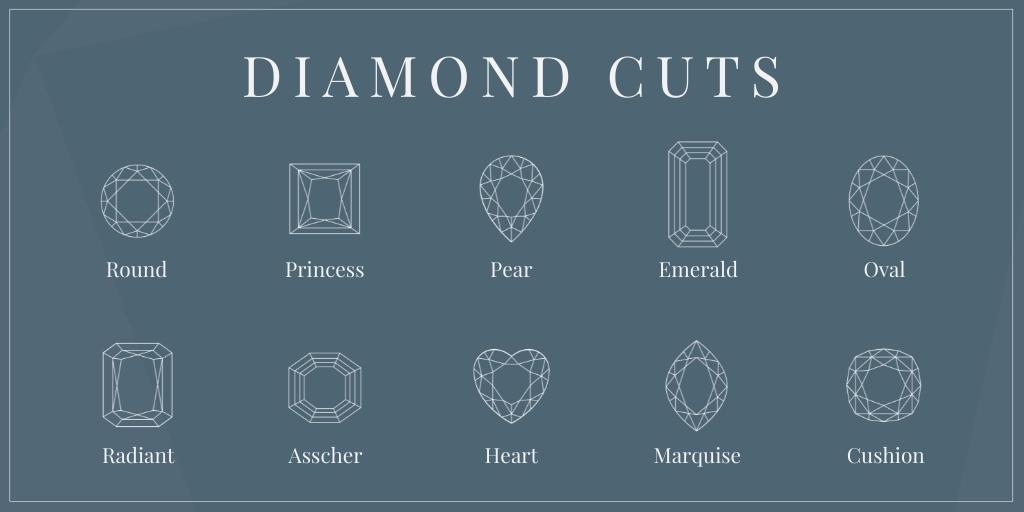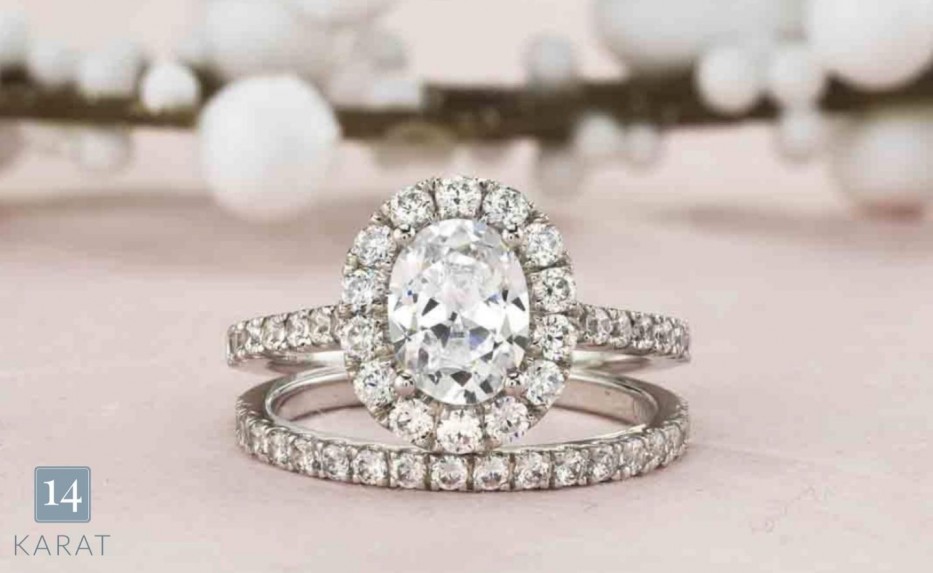The four Cs of diamonds are cut, color, carat and clarity. These four factors are considered together when determining a diamond’s value. There is no correct set of the four Cs, a diamond doesn’t have to be perfect in each category. They are useful guidelines rather than a strict scale of what is good or bad.
When shopping for an engagement ring, it is good to consider the four Cs. Your private jewelers Omaha experts want to help you find the perfect diamond. Below we’ll break down the four Cs, as well as show you how to stay within your budget when it comes to each component.
Cut
The cut refers to the shape of the diamond, but more importantly it is how well the diamond is faceted, proportioned and polished within each specific shape. Diamond cuts are graded via the GIA grading scale as excellent, very good, good, fair and poor. What’s also considered is the brilliance, or how the diamond shines under light.

Any range of a diamond’s clarity and color will be bright as long as the diamond is cut well. Some of the most popular cuts for engagement rings are round, cushion, oval, princess, emerald, pear, radiant, Asscher, marquise, baguette, trilliant and heart. What matters most is what you prefer; some may favor a cushion cut diamond while others love the look of a marquise cut.
Color
The color rankings are as follows: colorless, near colorless, faint yellow, very light yellow and light yellow. They fall under a D-Z scale, with D meaning completely colorless and Z having a yellow hue. Diamond color doesn’t hinder diamond quality, the color of your diamond is a personal preference.
Colorless diamonds are more expensive than those with a faint yellow hue. Round cut diamonds hide color exceptionally well, so you’re able to go further down the scale without seeing any yellow. A radiant diamond cut, however, will show color much easier.
Carat
Carat weight runs anywhere from 0.25 to 5 carats, or 4.1 mm to 11 mm. This is how much the diamond actually weighs. It’s important to know that a diamond’s carat is in reference to its weight, not necessarily its size.
A top-scale diamond will cost more, but a more affordable diamond might be just as gorgeous. There is no right or wrong way to go about choosing one. It really just matters what you think of the diamond’s appearance. Some people have small hands, so a smaller carat diamond suits them well.
Clarity
This C is most influenced by nature. Clarity measures the natural imperfections you can see in a diamond and how much you can notice them. These are called inclusions, and they’re ranked as follows: internally flawless (FL, IF), very very slightly included (VVS1, VVS2), very slightly included (VS1, VS2), slightly included (SI1, SI2, SI3) and included (I1, I2, I3).
A diamond will often look perfect and inclusion-free to the naked eye, even if it does have inclusions. Most people choose not to go higher than very slightly included (VS1) because when they compare the gem to a diamond higher on the scale, there is no noticeable difference.
Visit your private jewelers Omaha
Thinking about all of this information when it comes to shopping for a diamond engagement ring can be daunting. Maybe your fiancé has dropped some hints, you’ve gotten help from her family and friends or maybe you two are tackling it together. Whichever process you choose, your private jewelers Omaha experts are here to help. Come stop in today!
 14 Karat
14 Karat

Comments